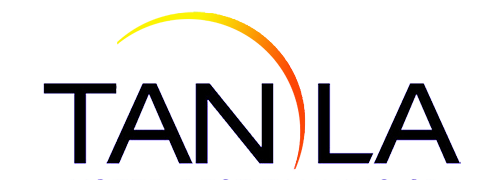HELIOTHERAPY
The Benefits of Light
Although heliotherapy traditionally refers to treatments that use natural sunlight, the term is also applied to artificial sources of ultraviolet, visible or infrared light radiation.
Since the 18th century when a French doctor noticed that the wounds of his patients healed faster when the patient was exposed to the sun. sometimes called phototherapy, it became a key part of certain treatment regimens for tuberculosis, notably tuberculosis of the bones, joints and skin, as prolonged exposure to sunlight can kill the bacteria which cause the disease. Infected children who were sent out to special homes and hospital retreats were encouraged to spend as much time outdoors as possible. These children had often come from dark and dingy city slums and exposing their skin to sunshine raised their levels of vitamin D, which also helped them fight the bacteria.
A century later, Danish physician, Niels Finsen, concluded similar results, and began treating diseases using sunlight. As sunlight is not available at all times, artificial alternatives were developed that could mimic the Sun’s beneficial effects. The Finsen lamp, is perhaps the best-known example. An ultraviolet lamp, it allowed flexible treatment in all seasons and its rays could be concentrated onto the most affected parts of a patient’s body. Its greatest success was in the treatment of lupus – tuberculosis of the skin Because of its success, Finsen won a Nobel Prize for his sunlight treatment for tuberculosis in 1903.
Before antibiotics, like penicillin were discovered in 1928, sunlight was used as a medicine for a number of diseases. This sunlight therapy was called heliotherapy (Helios means sun in Greek) was primarily used in Europe. It was the most effective way to cure infections between the end of the 19th century to the mid-20th century. Doctor Auguste Rollier was the most famous and successful Helio Therapist of his time. He owned 36 clinics in the Swiss Alps. His clinics were high in the mountains where UV -B radiation is stronger than at lower sea level. Rollier’s sunlight therapy combined with a vitamin rich diet cured patients from diseases such as rheumatoid arthritis, asthma and tuberculosis. In 1954, around the beginning of the pharmaceutical industry boom, Rollier died. By 1960 heliotherapy faded, replaced by the miracle drugs, “antibiotics “. Twenty years later everyone was told to stay out of the sun because sunlight would cause skin cancer. The therapeutic effects of sunlight come from UV rays.
With visible light, the sun radiates three types of ultraviolet rays, UV – A, UV- B and UV- C. UV-C is filtered by the atmosphere. UV -A is a weaker radiation, not retained by glass and sunglasses. UV-B radiation is the strongest and can be stopped by sunglasses, glass and sunscreen. Even when sitting in the shade, we absorb UV-B, which can provide great health benefits. A deficiency however, can cause muscle weakness, muscle cramps and osteoporosis.
In 2008, The American Association for Clinical Nutrition published a study on vitamin D deficiency as a global health problem. The study concluded that the major cause of vitamin D deficiency is the lack of sun exposure, which in moderation is the major source of vitamin D for most humans.
In 2011, a study by Penckofer and Kouba was published concerning the relationship between vitamin D3 and depression.
Despite the bad press and claims linking sun exposure to skin cancer, sun exposure actually helps prevent skin cancer and decreases melanoma risk. In fact, melanoma occurrence has been found to decrease with greater sun exposure, and can be increased by wearing sunscreens. An interesting fact is that an epidemic of skin cancer has in fact broken out among indoor workers. Indoor workers get three to nine times less UV exposure than outdoor workers, yet only indoor workers have increasing rates of melanoma, and the rates have been increasing since 1940. A study in Medical Hypotheses suggested that indoor workers may have increased rates of melanoma because they’re not exposed to sunlight outdoors. At the same time, these indoor workers are missing out on exposure to the beneficial UVB rays, and have lower levels of vitamin D.
Vitamin D is a steroid hormone that influences every cell in the body, and is easily one of nature’s best cancer fighters. Vitamin D converts to calcitriol in your bloodstream, which is the hormonal version of vitamin D. Organs then use it to repair damage, including damage from cancer cells and tumors.
A study by Dr. William Grant, found that about 30 percent of cancer deaths, which amount to 2 million worldwide and 200,000 in the United States, could be prevented each year with higher levels of vitamin D. When using sunlight to fight cancer, the dosage is important. Getting the proper amount of sunlight to optimize your vitamin D levels is key.
Your exact time will vary depending on your skin color, time of day, season, clouds, altitude and age. It is still important to never get burned, while still spending as much time as you can in the sun during the peak hours.
Be aware that using sunscreen will block your body’s ability to produce vitamin D.
So, enjoy the sunshine, often and in moderation!
More Benefits of Sunlight and UV Light
Increased Endorphin Production: Induces antidepressant responses, proven to help mood, a general “feel good” boost. Supports overall wellness for those who have been diagnosed with Seasonal Affective Disorder (SAD) a type of depression caused due to decreased exposure to the natural sunlight especially during the seasons of fall, winter and spring.
Healthier Bones: Synthesis of vitamin D is essential for bone health.
Increases Blood Cell Circulation: Promotes circulation and increases production of red blood cells.
Improves Skin Cell Circulation: Dilating capillaries in the skin surface, it can help heal injuries faster, with proper precautions and appropriate duration.
Induces Sweating: This enables the body to release toxins, detoxify.
Assists Immune System: Increasing white blood cells.
Antiseptic and Antibacterial Properties: Several bacteria are unable to reproduce and/or die in solar radiation.
More Articles:
Tanning Beds Decrease Ten Times More Cancers than they Cause – Dr. Mercola
“Another important factor to keep in mind is that vitamin D, ideally from sun exposure, may decrease your risk of many other cancers and chronic diseases”
Sun Exposure Protects Against Melanoma—The Most Dangerous Form of Skin Cancer – Dr. Mercola
“There’s also compelling research showing that sun exposure will indeed protect you against melanoma—the most dangerous form of skin cancer”
The Link Between Breast Cancer and Vitamin D – Vitamin Council
At Tan LA we cannot control the UV rays of the sun, but we can promote responsible and moderate indoor tanning in only the finest indoor tanning systems. We highly recommend gradually exposing your body to ultraviolet light in one of our indoor tanning systems before vacations and other outdoor activities to help minimize your risk of burning.
Tanning… Look Good… Feel Great!










